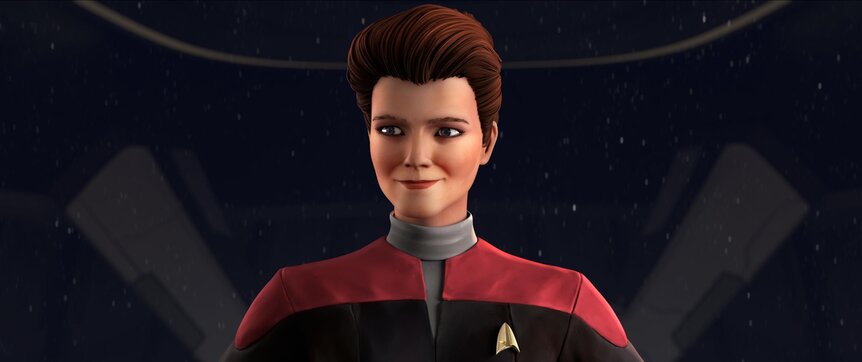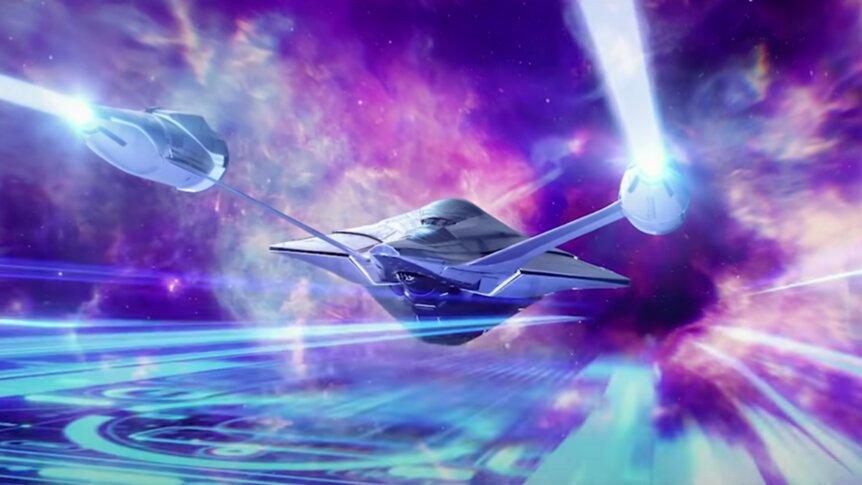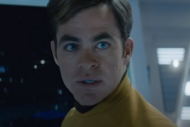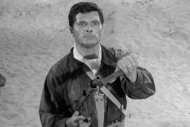Create a free profile to get unlimited access to exclusive videos, sweepstakes, and more!
Exclusive: How Star Trek: Prodigy's showrunners pulled off that action-packed first episode
Boldly go on a deep dive into the making of Star Trek's newest (and very exciting) animated series.
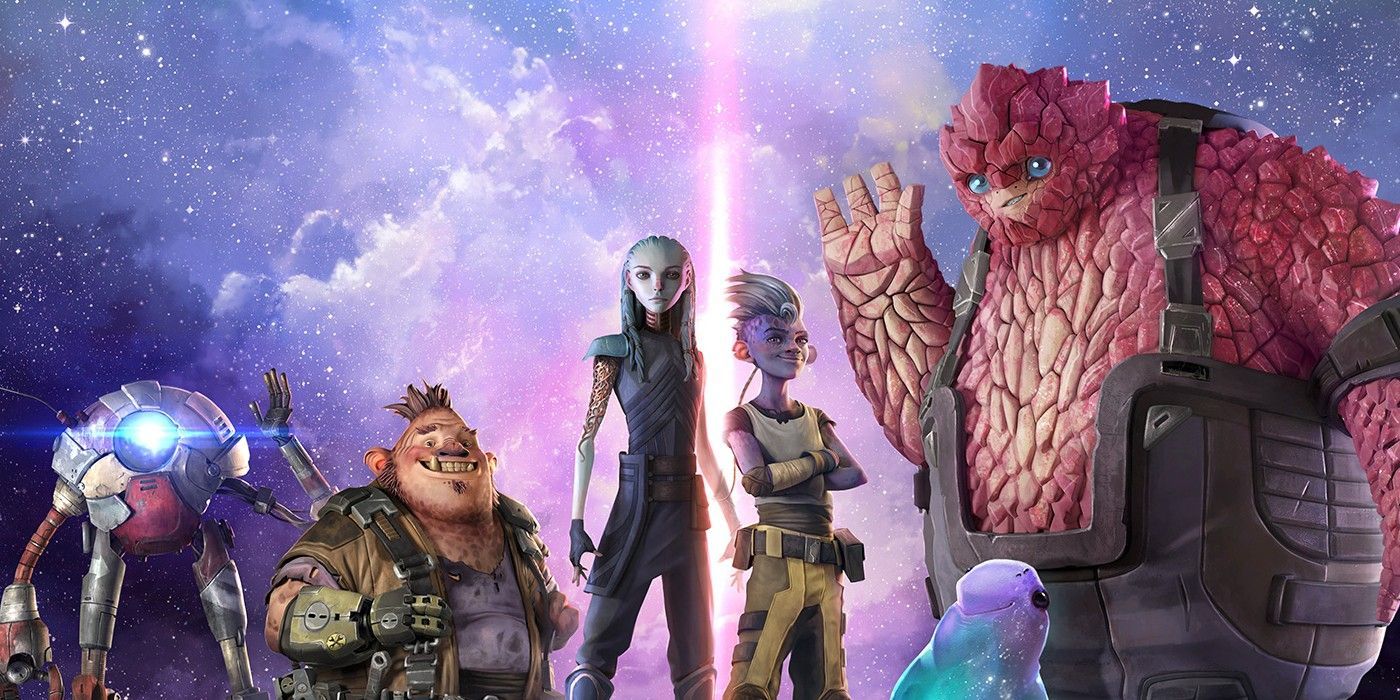
The elevator pitch for Star Trek: Prodigy could be "It's The Goonies meets Star Trek." Which, according to showrunners Dan and Kevin Hageman (Netflix's Trollhunters), that was kind of intentional.
The latest animated Trek series, which is now available on Paramount+ and Nickelodeon, is the first to center on a group of kids figuring out their way around their shiny new starship instead of a trained bridge crew of adults. The goal for the Hagemans was to wisely put the target audience — kids — at ground level with these characters; that way, every victory they earn or action-packed adventure they take feels like one of our own. It's an exciting way "in" to the world of Trek, and it shows that there are still has some corners of the Final Frontier that the long running franchise has yet to explore. Prodigy's voyage takes some bold (and welcome) creative swings to tell a story that both Trek fans and newcomers have never seen before — and how the creatives pulled off such a feat is just as riveting as the series itself.
In an exclusive interview with SYFY WIRE, the Hagemans took us on a deep dive through the Prodigy pilot and revealed some secrets behind the making of the show, including the early days of the series' development and how a Steven Spielberg-produced '80s classic helped set the tone for this new crew.
**SPOILER ALERT: If you haven't seen Prodigy yet, stop reading now. There be spoilers here!**
In the original pitch for this show, did you always have Captain Janeway in mind?
Dan Hageman: Yeah, she was literally in there from the beginning. I think we have told this story before, but when we were walking out of Secret Hideout [Alex Kurtzman's production company] — basically with all intentions of passing on the project — we were feeling like we weren't really the right people for it.
Kevin Hageman: We are Trek fans, but, there are serious Trek fans out there.
Dan: Right. Not like [Lower Decks creator] Mike McMahon, who is, really into it. And we literally were just about to get in the car and leave the office, and we were like: "You know what? If we did this show, we could probably do it if it's about a bunch of kids who didn't know anything about Starfleet. And what if their mentor or guide was Captain Janeway? A hologram version of Captain Janeway? So that was the initial intention.
Kevin: And we realized that she was so integral. So you start with an outsider's point of view going into the Trekverse, and then we get to enjoy it all. Which I think is great for the new audience, which is what the purpose of the show is.
Dan: But, how close is the show to our original pitch? Honestly, it was very close. At that moment, when we came upon what the show could be, it just felt real, or, like it was easy to follow all of those choices. And I think, from writing the pilot to the ending of Season One, everything stayed the same. The only thing that was new was, we added the character of Murf very late into the game.
Kevin: We were falling in love with the show, and the characters, more and more. And we were like: "Wouldn't it be funny if, for whatever reason, the last beat in the [pilot] script is — what if Dal (voiced by Brett Gray) comes back from getting sent to the planet's surface, he quickly finds out he has been replaced by this semi-sentient blob?"
Dan: And I think we ended up including Rok-Tahk, the one who brings Murf onboard [the starship Protostar], in a slightly different way. But it started off as a joke. And, the more we thought about it, we just kind of love this idea that — because it is for a Nickelodeon show — there should be like a dog-type character, you know? Something the kids can easily lock onto. Our goal here was, if the typical Star Trek shows are [about] fully formed adults, let's see kids who are growing and failing.
Now to get more scene-specific with the pilot: Who came up with the idea to open it with the crystal cracks forming the Delta insignia? It was a very cool visual that Trek has never done before; it felt very Chris Nolan to me, in how The Dark Knight Rises opens with the cracking ice forming the Bat symbol.
Dan: It should feel very Kurtzman-y because it literally was Alex Kurtzman who had that idea. We originally had this idea where — and I don't know if it really one hundred percent comes across — but originally it was supposed to look like a galaxy. But then you find out you're looking at an alien rock that's being mined and it cracks open.
Kevin: So let me expand on that. It was always the promise of, you know, the opening image of space. Like, that's what every Trek show has, right? And then like, for me, that's sort of like the Spielberg effect. How he always starts any of the Indiana Jones movies with some kind of clever visual transition to the Paramount mountain. It's a fun opening and it just puts you in a good mood. So Kurtzman saw it, and he was like: "That's cool. But what if the cracking shards form the emblem?" And from that, we give sort of the promise of stars. And it also speaks to how we are taking our time with the show, with getting our characters to this [very Star Trek place]. Our big worry was that we really hope fans don't get frustrated that we're taking our time. It's just, that our characters — they don't live fully in this world yet. They don't know it. So, we reference it very lightly at first. We try to promise it, with the return of the Kazon [from Star Trek: Voyager] and little touches here and there.
In building up to the Trekness here, that opening chase that opens the show is such a smart way to show who our main character is, Dal, through action. Was that always the plan for how to kick off the episode? What inspired that?
Dan: It's a Goonies kind of opening. It's totally a pull from that. We always kind of knew that's how we wanted to start the show. You meet the characters, even though they don't know each other maybe yet, we haven't seen them together yet.
Kevin: But Dan, remember, we always knew we needed two episodes to do this plot. We didn't want to rush them off the rock by the end of the first 22 minutes; it is too fast. And so we knew that the end of the pilot, that episode two is going to be the escape. They are going to find the ship and they're going to somehow fly a starship out from under the ground and escape. What we learned from working on Ninjago or Trollhunters is — adventure has to be in every episode. And so we felt like the best place to start is in the opening sequence, and it's the promise of adventure. The rest of episode one is — you're meeting characters and their worldview, and you're setting up the villain and the stakes. And the action is quite big at the beginning, and there's big action at the end. But the rest of it in the middle is all the character stories.
And with creating the emotional throughline for these characters in between all that action, you got to help create a brand new starship. There must be life before, and life after, doing that.
Dan: It was fun. It was a little nerve wracking to me also because, it's like, you want to love everything you see. And sometimes we see designs and go, "Yeah, that's not it."
Kevin: Or you want to push [the design], but you can't break what everyone loves about starships and Star Trek, right? But you want to push it and you want the ship to be like another character. And our ship is like one of our characters on this show.
Dan: You want the saucer, you want the nacelles.
Kevin: It is interesting, though, when I look at the Protostar, it has a lot of the iconic language that the Enterprise has. It's just smaller. It looks like a little hummingbird, though.
The Protostar has this great hero moment in the show, where it knifes through a waterfall and that — that shot gives the movies a run for their money.
Dan: Thank you! I think that was one of the first shots we had designed or commissioned for the show. And when I saw that shot, I was like: "Oh, we have to have that. That has to be in the show."
Kevin: It felt like a movie moment. We wanted that glorious, cinematic moment with the ship.
Dan: And we knew we didn't want that shot shown in any commercial. We were like: "Save that."
Kevin: And honestly, in the script, that was our big moment. It was the big unveiling of the ship; that was the curtains opening on our ship moment. But, when [director and co-EP] Ben Hibon was boarding it, he added this beat where the ship was falling and all of a sudden the crew gets it going again and it rises up. And that was awesome, too! So we were like: "We're just going to have two awesome ship reveal moments."
Star Trek: Prodigy is now streaming on Paramount+ and airing on Nickelodeon.
